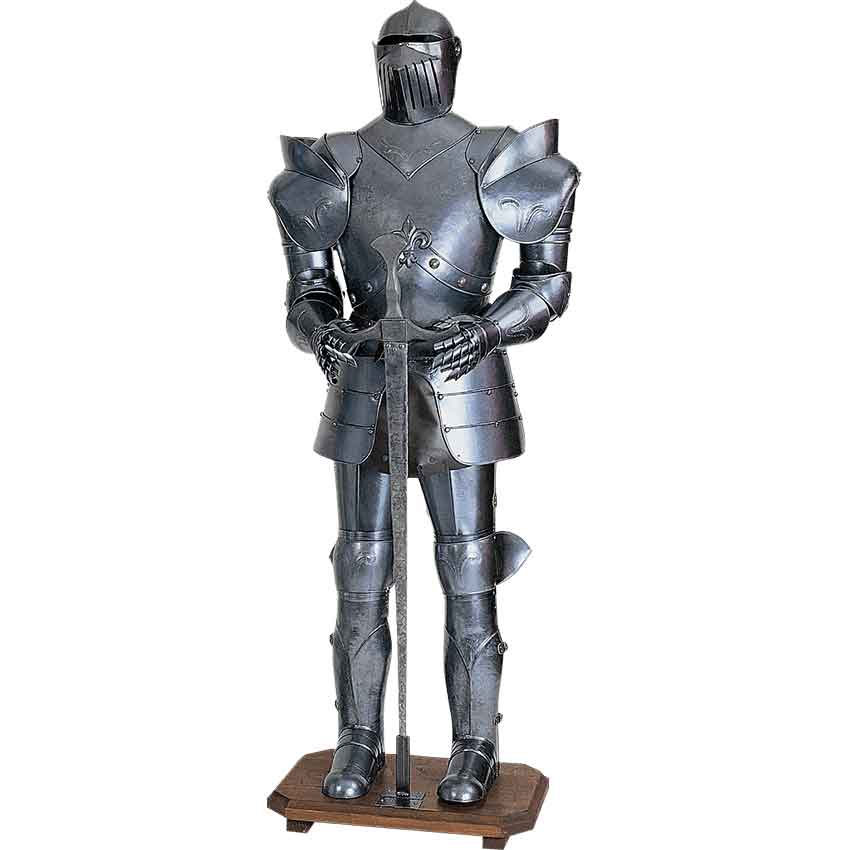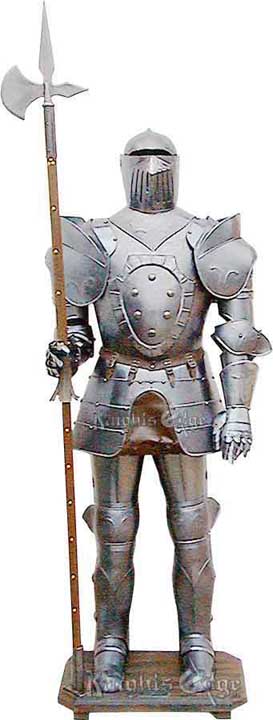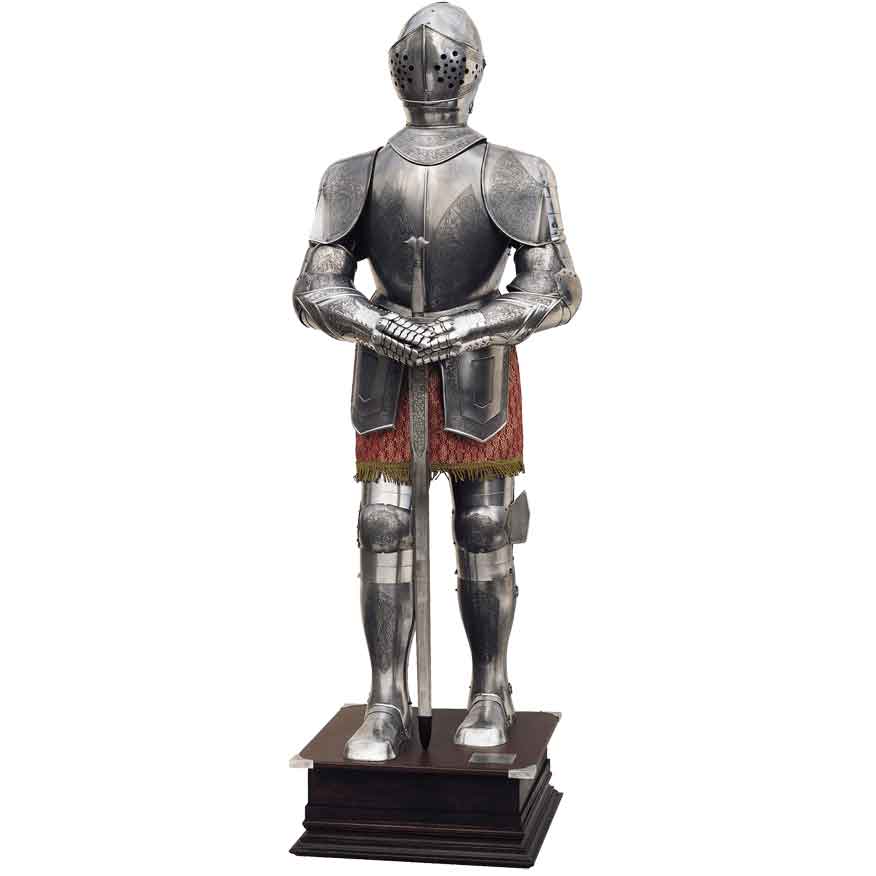When you think of medieval knights and their legendary battles, you might picture the gleam of a suit of armor. But what if you could bring that majestic history into your home? Decorative suits of armor do just that—they encapsulate a rich history and serve as stunning display pieces. In this guide, we’ll explore everything you need to know about decorative suits of armor, from their history to how to choose the right one for your decor.
The Historical Significance of Armor
Armor was not just a protective gear for warriors; it was a statement of power, prestige, and craftsmanship. Knights in shining armor were often symbols of chivalry, embodying the virtues of bravery and honor in battle.
The Evolution of Armor Through the Ages
From the early chainmail to the full plate armor of the Renaissance, the style of armor has evolved significantly. Here’s a brief look at its evolution:
| Era | Type of Armor | Features |
|---|---|---|
| Medieval (500-1500) | Chainmail | Flexible, made from interlinked metal rings. |
| Renaissance (1500-1600) | Full Plate Armor | Heavy, protective plates covering the body. |
| Baroque (1600-1700) | Ornate Armor | Decorative engravings and embellishments. |
Choosing the Right Decorative Suit of Armor
When selecting a decorative suit of armor, it’s essential to consider various factors to ensure it complements your decor and fits your personal style.
Types of Decorative Armor
There are several styles of decorative suit of armor available, each catering to different aesthetic preferences:
Medieval Knight Armor
This classic design features sturdy plates and intricate details, often appealing to history buffs and medieval enthusiasts alike.
Fantasy Armor
Inspired by films and literature, fantasy armor might include imaginative designs and colors, perfect for a whimsical touch in a game room or office.
Samurai Armor
Steeped in cultural significance, Samurai armor is not only decorative but also tells a story of honor, discipline, and artistry.
Material Matters: What to Look For
When it comes to quality, the material used in the construction of the armor can greatly affect its aesthetic and durability.
| Material | Pros | Cons |
|---|---|---|
| Steel | Durable, traditional look | Heavy, may require maintenance |
| Aluminum | Lightweight, resistant to rust | Less authentic appearance |
| Fiberglass | Affordable, versatile designs | Less durable, may look plastic |

Maintenance Tips for Your Decorative Armor
To keep your suit of armor looking brand new, it’s crucial to maintain it properly. Here are some tips:
- Dust Regularly: Use a microfiber cloth to remove dust from the surface.
- Avoid Moisture: Keep the armor in a dry place to prevent rusting.
- Inspect for Damage: Regularly check for dents or scratches and address them immediately.

Creating a Stunning Display
Now that you’ve chosen your decorative suit of armor, it’s time to find the perfect way to display it in your home. Here are some ideas:
Display Options
Some popular display options include:
Wall Mounting
Hanging your armor on the wall transforms it into a focal point in any room.
Freestanding Display
A freestanding suit of armor can occupy hallways or corners for a dramatic effect.
Incorporating into Thematic Rooms
Consider a medieval-themed room or a game room where your armor can enhance the overall atmosphere.
Pros and Cons of Decorative Suits of Armor
Like any decor, there are advantages and disadvantages to owning a decorative suit of armor. Here’s a quick rundown:

| Pros | Cons |
|---|---|
| Unique statement piece | Can be expensive |
| Rich historical value | Heavy and requires adequate support |
| Conversation starter | Maintenance required for preservation |
Where to Buy Decorative Armor
Finding the right place to purchase your decorative suit of armor can be challenging. Here are some options:

Online Retailers
Numerous online platforms offer a wide variety of suits, often with customer reviews to help guide your purchase.
Antique Stores
If you prefer something with a story, consider checking out antique shops where unique pieces may be available.

Specialty Stores
Some stores specialize in medieval or historical replicas, providing quality pieces with accurate details.
FAQs About Decorative Suits of Armor
What is a decorative suit of armor made from?
Decorative suits of armor can be made from various materials including steel, aluminum, and fiberglass, each offering different aesthetic and durability characteristics.
How can I maintain my decorative armor?
Regular dusting, avoiding moisture, and inspecting for damage will help maintain the look and longevity of your armor.
Where should I display my suit of armor?
Common display options include wall mounting, freestanding displays, or incorporating them into themed rooms for added character.
Is decorative armor expensive?
The price of a decorative suit of armor can vary significantly based on material, design, and craftsmanship; there are options available for various budgets.
Can I find unique suits of armor?
Yes, antique shops and specialty stores often have unique pieces that tell a story and add character to your decor.
Conclusion: Bringing History to Your Home
A decorative suit of armor not only adds an exquisite touch to your home decor but also serves as a gateway to the fascinating history of chivalry and craftsmanship. By understanding the styles available and how to care for them, you can create a stunning focal point that embodies your personal style while sparking conversations among your guests. Whether you opt for a classic medieval knight piece or a fantastical interpretation, integrating a suit of armor into your home is a decision you won’t regret.